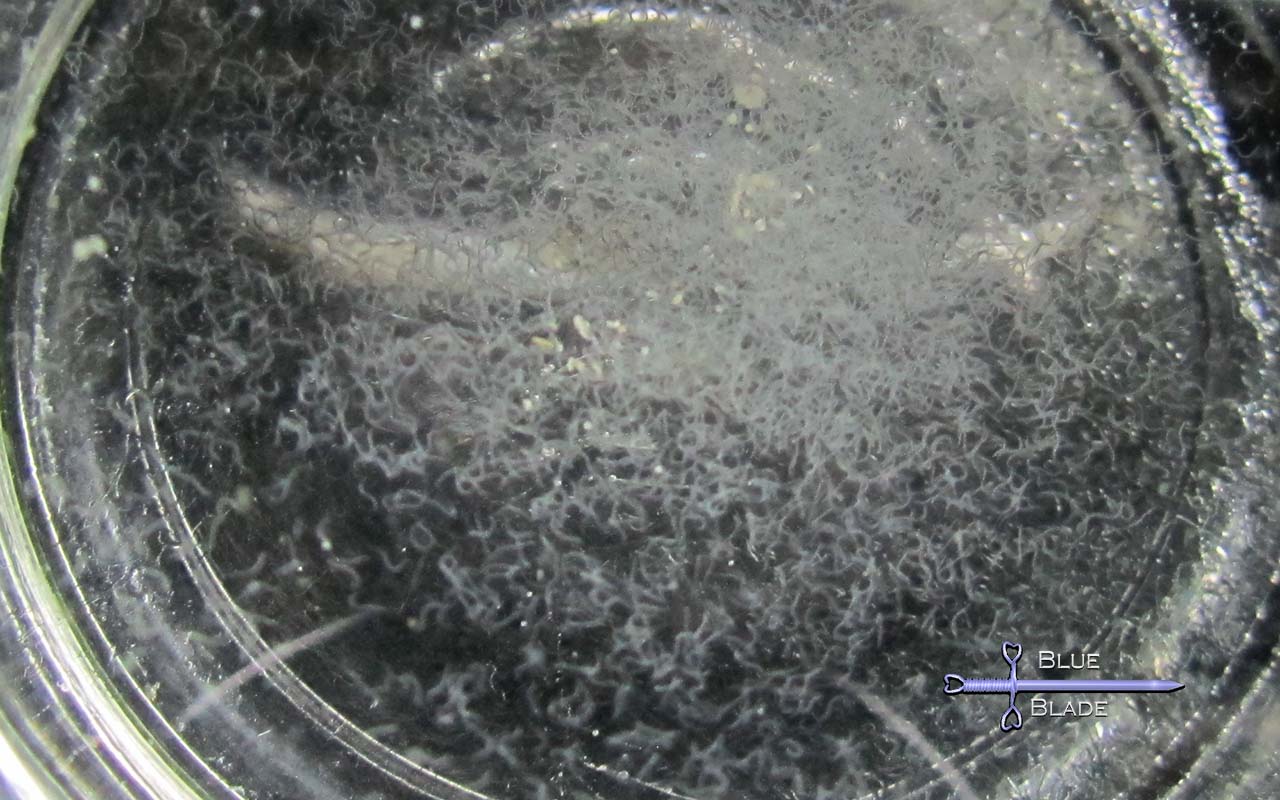
Most breeders agree that there is no better food for your fish than live foods. Even very picky eaters will almost always enthusiastically chase down and eat live foods. Since it doesn't immediately begin decomposing if not eaten, like frozen or flake, you can feed your fry or breeders more to prep them or grow them faster. Aquatic foods like daphnia, scuds, and mosquito larva can live in a freshwater fish tank indefinitely. Others, such as brine shrimp or worms will die and begin to pollute the tank eventually, but your critters have many hours to find and eat them first.
Unfortunately, very few pet stores sell live foods for your fish (except for feeder fish, which have a whole host of potential issues). In most cases you will need to culture, hatch, or collect your own. We culture 4 types of foods for fish, and often offer starter cultures for sale.
Daphnia
Daphnia or "water fleas" are small (.5 to 3mm) freshwater crustaceans that bob around in the water column with tiny jerky motions. They are filter feeders that primarily eat algae and other very small, suspended particles. We feed ours greenwater, yeast, and spirulina powder. They are completely safe for all types of aquaria and in my experience any fish big enough to eat them absolutely loves them. Culturing them does not take a lot of effort but keeping a culture thriving for a long time can be difficult. I recommend that you have multiple cultures for redundancy. They can be fed to marine fish but die very fast in saltwater (if not eaten, which is seldom a problem).
Scuds
These are freshwater amphipods that grow to 6mm or 1/4 an inch long. They are scavengers, and like snails they will eat algae or almost any foods they can find. Culturing them is very easy and the scud culture can double as a plant cleaning tool - as they can clean almost any type of algae off a plant in very little time. Small and medium size fish will happily chase them down and eat them, however unlike daphnia scuds will swim for cover and hide. In a tank with plenty of cover enough may survive to reproduce - making them a long term snack and entertainment for your fish. We culture the Hyalella Azteca species common in the southern US.
Micro Worms
Micro worms Panagrellus redivivus are tiny nematode worms ranging in size from 1-3 mm in length (about 1/32nd of an inch) and roughly 50-100 microns in diameter (as thin as a strand of hair). They can live submerged in water (fresh or salt) for 8 to 12 hours. Their small size makes them good food for fry, small grazing fish like dragonets and gobies, and corals. They are one of the easiest live foods to culture needing no maintenance other than starting a new culture every few weeks.
Grindal Worms
While much larger then microworms, Grindal worms Enchytraeus buchholzi are still small - only growing to 5-12 mm in length (1/4 to 1/2 inch). They can live submerged in water for several hours and are an excellent food for smaller fish such as bettas, guppies, or killifish. Grindal worms are easy to culture but require feeding every day or two to maintain them. They are annelid worms that thrive at room temperature (70-80 deg F) unlike their cousins, white worms, which need colder conditions.
Vinegar eel - Porridge Culture
Vinegar eels are tiny nematode worms ranging in size from less than 1 to 2 mm in length. They make an excellent food for food for fry, small fish, and corals.
They can live submerged in water (or vinegar) indefinately, and will swim at all levels in the water column. My worms are cultured using the vinegar porridge technique which allows for easy harvisting, similar to microworms. you may also use this starter with pure apple cider vinegar for a normal vinegar eel culture.
Live Marine Foods:
Greenwater\Phyto - Nannochloropsis oculta
Phytoplankton can be fed to Copepod cultures or dosed directly to your Marine tank to feed pods and corals.
I (and many others) believe it to also be effective at reducing nitrates, though I cannot say if that is a direct effect of photosynthesis, or a secondary effect by producing a healthy microbiome.
Our stock is single strain and is suitable for re-culture or direct feeding.
This species is tolerant of both marine and freshwater, and we culture it in both SG 1.020 saltwater and freshwater with just 1tsp/Gal of salt.
The freshwater line serves as "greenwater" and is an excellent food for your Dpahnia and Moina cultures.
F/2 culture medium
Not a live food per-se; F/2 Culture medium is used to grow Phytoplankton and Green-water Cultures.
We mix our own Guillard's F/2 culture medium as per the published recipe but concentrated to produce the proper solution when added to seawater at 1ml per Liter (or about 5ml/Gallon)
- and are now offering it for sale.
Copepods
Marine copepods make up the bottom of the food chain. They are an excellent addition to a Reef tank, providing food for corals and picky fish such as dragonets, and helping to reduce algae and biofilm buildup. We culture a mix of Copepods, but the primary species is Tigriopus californicus. Our stock is is suitable for re-culture or direct feeding.
To get your own foods follow the Links under "Buy Here"
Or to contact us to see if any are available at contact@bluebladefish.com